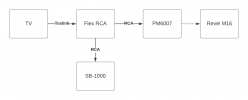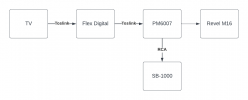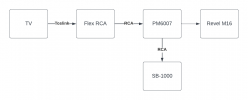I was very impressed with Dirac when I first used it (though that was on a DDRC24). For example I could hear individual voices in a choir, rather than them being mashed together.I will likely skip Dirac for now. If I not wrong, I understand that Dirac is easier and perhaps will give better fine tuned results, but and the moment I think that manual configuration will help me better understand the EQ kitchen
I later realised the importance of exact timing, which Dirac is good at. I still use Dirac to set timings, even when using REW EQ. It can be done with REW itself, though you need to know where to look and do some sums.



